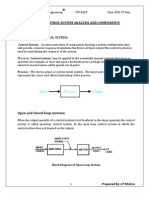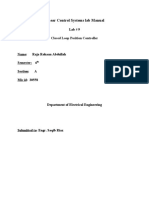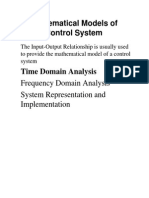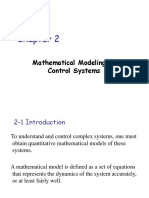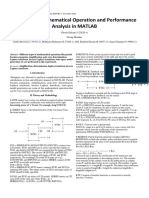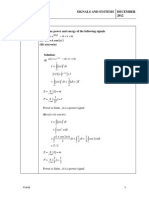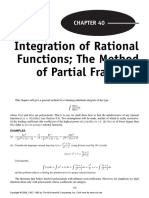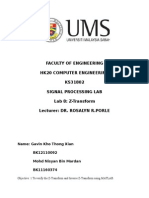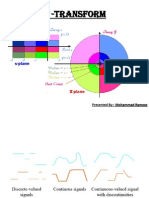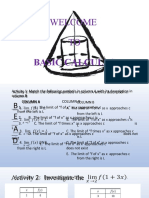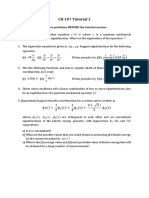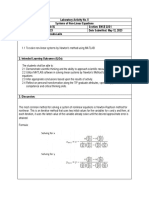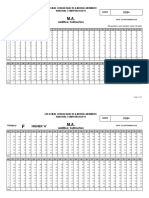0% found this document useful (0 votes)
144 views5 pagesLecture 15 - Z-Transform
- The z-transform is derived from the Laplace transform and is used to analyze discrete-time systems and signals. It relates a discrete-time signal x[n] to a complex function X(z) of a complex variable z.
- The z-transform allows converting difference equations defining discrete-time systems into algebraic equations, just as the Laplace transform does for continuous-time systems.
- Key properties of the z-transform include that z-1 represents a unit sample delay operator and the region of convergence in the z-plane where the z-transform exists. The document provides examples of calculating z-transforms and the inverse z-transform.
Uploaded by
stuxionCopyright
© © All Rights Reserved
We take content rights seriously. If you suspect this is your content, claim it here.
Available Formats
Download as PDF, TXT or read online on Scribd
0% found this document useful (0 votes)
144 views5 pagesLecture 15 - Z-Transform
- The z-transform is derived from the Laplace transform and is used to analyze discrete-time systems and signals. It relates a discrete-time signal x[n] to a complex function X(z) of a complex variable z.
- The z-transform allows converting difference equations defining discrete-time systems into algebraic equations, just as the Laplace transform does for continuous-time systems.
- Key properties of the z-transform include that z-1 represents a unit sample delay operator and the region of convergence in the z-plane where the z-transform exists. The document provides examples of calculating z-transforms and the inverse z-transform.
Uploaded by
stuxionCopyright
© © All Rights Reserved
We take content rights seriously. If you suspect this is your content, claim it here.
Available Formats
Download as PDF, TXT or read online on Scribd
/ 5
















